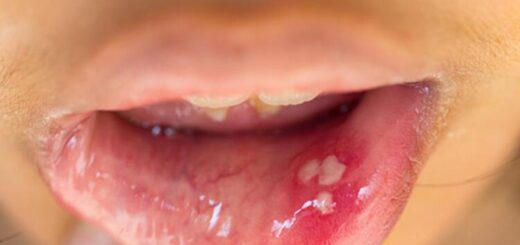Anorexia nervosa: what is it?
Anorexia nervosa (lat. anorexia nervosa ) is an eating disorder in which the sufferer significantly limits the amount of food consumed. In addition, the patient sometimes uses other “measures” to maintain underweight , e.g. inducing vomiting .
After some time, the disease manifests itself quite clearly, namely the extreme emaciation of the affected person. Anorexia nervosa has a number of consequences, some of which can be serious.
Restriction of food intake
Significant weight loss in anorexia nervosa is self-inflicted, most often by restricting food intake (including drinks) and starvation .
In addition, people with disabilities use other methods to achieve weight loss, such as:
- inducing vomiting ,
- use of laxatives ,
- use of anorectics ( medicines that reduce appetite ) and/or diuretics (medicines that promote urination),
- extreme physical activity (excessive exercise).
According to the predominant form of behavior, experts divide anorexia nervosa into the so-called restrictive type, in which there is no use of drugs or vomiting, and the so-called purgative type, which is characterized by bouts of overeating and subsequent vomiting.
Weight loss and distorted perception of one’s own body
Adults with anorexia nervosa have a body mass index ( BMI ) of less than 17.5 kg/m 2 and a body weight that is at least 15% less than would be expected for a given sex, age and height. For children and adolescents, the “ideal” weight is assessed according to so-called growth charts [1, 2]. If the weight of a child or adolescent is below the 3rd percentile, this corresponds approximately to a BMI value of 17.5 kg/m 2 for an adult and may therefore be anorexia nervosa.
Although people with anorexia nervosa are extremely thin, their perception of their own bodies is so distorted that they believe the opposite: they feel that they are too fat.
Hormonal disorders almost always occur . These can be manifested in girls or women by missing menstruation ( amenorrhea ), in men by loss of libido or potency. Patients are often completely unaware that this is a disease that can have very serious consequences. In most cases, only the doctor who diagnoses anorexia nervosa when clarifying the causes of weight loss has to convince them of this .
Even the closest relatives do not notice the first symptoms of anorexia nervosa at first. The disease can start, for example , with diets that look completely harmless at first glance (e.g. eliminating sugar or sweets from the diet). Weight loss can be very slow in some cases. Some patients are extremely picky and strict about their diet, e.g. completely avoiding sugar, fiber and fat . Among the symptoms of anorexia nervosa can also be some rituals associated with food, e.g. biting extremely slowly or cutting food into very small pieces.
Anorexia nervosa can also be triggered by various situations or life changes, such as, for example, first love, the first long stay abroad or changes during puberty. By themselves, however, they are not decisive for the development of this disease. For more information on risk factors , see the article Eating disorders : what are they?
Consequences of anorexia nervosa
Anorexia nervosa has a number of consequences, some of which can be very serious. Starvation affects not only the body, but also the soul. At first, the affected person still feels good. However, with progressive weight loss and constant hunger, more and more consequences appear and the body stops functioning properly. Because of their disease, the disabled often miss out on many experiences that are typical for their age (for example, self-awareness during puberty, etc.).
Disorders of development and hormonal balance
In children and adolescents, anorexia nervosa can lead to a “stalling” or delay in development, which in girls can be manifested by, for example, a delay in puberty and the onset of the first menstruation. In older girls, disruption of the hormonal balance can be manifested by missing periods ( amenorrhea ).
Osteoporosis can also be a late consequence of anorexia nervosa due to reduced nutrient intake and hormonal imbalance . Under normal circumstances, a large part of the bone mass (from which the body will continue to draw in future years) is formed just before and during puberty.
Cardiovascular system and metabolism
Significant weight loss leads to a decrease in body temperature , blood pressure and heart rate , and even to a slowing of the breathing rate . All this is manifested, for example, by the cold limbs of the affected person. A slowed heart rate can also lead to dizziness and fainting . In addition, the ion balance is disturbed and susceptibility to inflammation increases . Swelling may be visible on the limbs , and sleep disturbances sometimes occur .
Lack of nutrients, effect on skin and hair
Anorexia nervosa also manifests itself in the appearance of the skin and hair: the skin tends to be pale and dry, sufferers lose their hair, etc. Tooth enamel can also be damaged due to frequent vomiting . Swelling of the salivary glands is one of the many symptoms of physical changes in anorexia nervosa .
Digestive problems, such as constipation or flatulence, are also a consequence of a lack of nutrients and limited food intake .
Organ damage
Constant starvation damages virtually the entire body, including vital organs such as the brain , liver , kidneys and heart . A severe form of anorexia nervosa therefore has very serious consequences. Kidney damage can occur, and in very serious cases, kidney failure .
Psychiatric symptoms and mental health
Anorexia nervosa often develops during adolescence. Its accompanying symptoms can be disturbances in concentration, loss of original interests and a total change in behavior – for example, isolation not only from peers, but also within the family (so-called social withdrawal ). During the course of the disease, apathy or, on the contrary, irritability may occur, sufferers often have a depressed mood. At the same time as anorexia nervosa, some other mental illnesses often occur , eg depression , anxiety disorders or obsessive compulsive disorder , or symptoms of some mental disorders .
The disease usually lasts for several years. Treatment is possible, but in the case of a prolonged and serious course of the disease, one must expect severe damage to the organism, and in the worst cases, an increased risk of death, either as a result of the disease itself or suicide .










